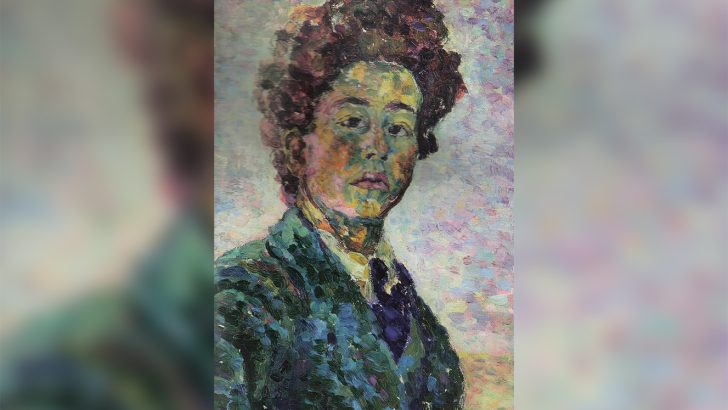Alberto Giacometti: Marvellous Reality, a bilingual catalogue edited by Émelie Bouvard and others (Grimaldi Forum, Monaco/Fondation Giacometti, Paris, €35.00)
Exhibition Giacometti from Life, curators: Sean Rainbird and Janet McLean (National Gallery of Ireland); Catherine Grenier and Thierry Pautot (Fondation Giacometti), continues to September 4 2022, Beit Wing (Rooms 6–10). (Intending visitors need to book an exhibition ticket on-line.)
It has been a very long time since any works by the Swiss-born painter and sculptor Alberto Giacometti, who was long resident in Paris, were seen in Dublin.
More than 50 works by Alberto Giacometti (1901–1966) are displayed in the first exhibition of the artist’s work held at the National Gallery of Ireland. It includes bronze and plaster sculptures, paintings, drawings, and prints. So this show provides a unique opportunity to see examples of his work covering every period of his life.
Highlights
The exhibition highlights the artist’s close working relationships with family members and friends who modelled for him. But it does more than that.
Much of his work as a sculptor is characterised by a typical “walking man” figure, ever advancing but getting nowhere. Having seen some of his works in London, before even setting foot in this present exhibition, I associated Giacometti in my mind with the imaginative world of our own Samuel Beckett. I was delighted then to learn from the excellent catalogue that accompanies the show that Giacometti had known Becket as a friend who visited his studio.
Hugo Daniel, of the Fondation Giacometti, comments on their friendship. “It goes back to 1937 and developed in the post-war period. The two artists liked to meet in the endless evenings in the cafés of Montparnasse, then to stroll around Paris at night. Their deep kinship brought their works closer together, and this was expressed in an exceptional collaboration.” This resulted in Giacommetti, designing a stage setting for Waiting for Godot at the Théâtre de l’Odéon in Paris in 1961.
He is a man of mid-century, of those artists and writers who flourished between 1935 and 1965, a cohort of culture with their one special international identity”
Much is made of Giacometti’s relationship with Jean-Paul Sartre, but in reality (from an Irish perspective at least) the connection with Beckett is really far more vital, or so it seems to me. Many of the insights gained by critics into Beckett’s vision can be pursued as well in the work of Giacometti.
This is only one of the surprises that the exhibition reveals. Giacometti began to emerge as an artist in the 1930s, but it was not really until he returned to Paris in the later 1940s that he became prominent on the international scene.
I think he is best seen not as an artist of the first half of the 20th century or the second half. He is a man of mid-century, of those artists and writers who flourished between 1935 and 1965, a cohort of culture with their one special international identity. (Midcentury was indeed the title in 1961 of one of the last novels of John Dos Passos.)
Activities
This show takes the visitor from early life and activities in his native Switzerland bordering with Italy, to his last days in 1966. What distinguished them all is his intense focus on individuals and their character. His technique was an attempt to give expression, not to a generalised image, but a deeply individual one. To appreciate his vision as an artist he has to be approached with patience and attention on the viewer’s part which has to be quite as intense as the artist’s was.
Smile
There is nothing spectacular in this show. The pieces are all less than life size, even tiny. One of the most interesting is a bust of Simone de Beauvoir, in which that most flamboyant and larger than life writer is modelled on a miniature scale which still captures her appearance in an extraordinary way, which made me smile.
But what is on display is very engaging and well worth the time needed to explore it”
His paintings seem less revealing. But there is an interesting point noticed by those photographers who made colour images of him at work. They observed that the artist’s studio was in reality filled with colour, though his art works seem to exist in a subdued grey, brown, tobacco-coloured realm.
One realises that if Giacometti had lived a little longer he might well have reverted to his very earliest years in which he added colour to some of his own father’s sculptures to humanise them. If he had lived as long as Picasso we might have seen the development of a very different artist.
Engagement
But what is on display is very engaging and well worth the time needed to explore it. This is yet another of the shows from abroad which have characterised the administration of Sean Rainbird as director, whose engagement comes to an end this year. Over the years we have had a lot to thank him for.


 Peter Costello
Peter Costello Early self portrait by
Alberto Giacometti.
Early self portrait by
Alberto Giacometti. 